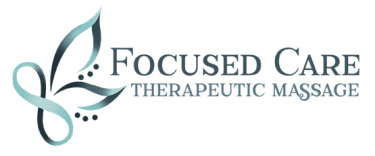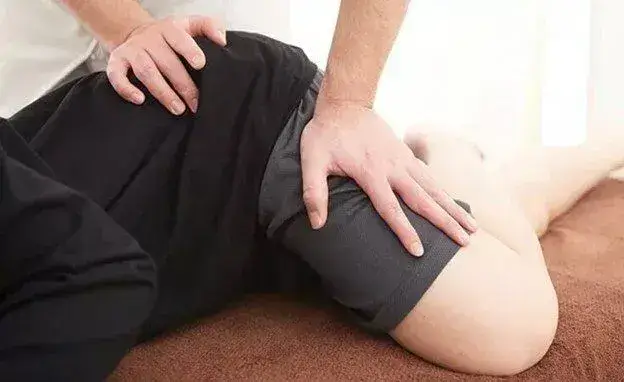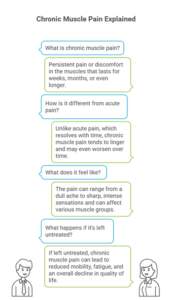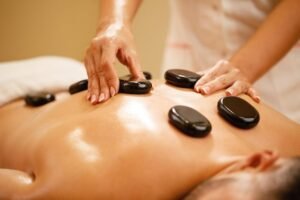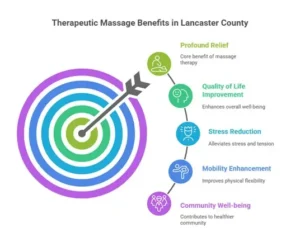Myoskeletal Alignment Technique
Myoskeletal massage represents an advanced form of manual therapy that addresses the complex relationship between muscles and skeletal structure. Developed through extensive study of structural integration and movement patterns, this approach goes beyond traditional massage to correct postural imbalances and restore proper body mechanics. The technique combines deep tissue massage, muscle energy techniques, and joint mobilization to create lasting changes in how the body moves and functions.
The foundation of myoskeletal work lies in understanding how muscles, fascia, and joints work together as an integrated system. When one component becomes dysfunctional, it affects the entire kinetic chain, creating compensation patterns that lead to pain and restricted movement. Practitioners trained in myoskeletal alignment learn to identify these patterns and apply specific techniques to restore balance throughout the body.
The Science Behind Structural Balance
Human bodies constantly adapt to daily activities, repetitive movements, and postural habits. These adaptations often create asymmetries that place excessive stress on certain structures while underutilizing others. Over time, these imbalances contribute to chronic pain conditions, particularly in the back and neck regions where the spine bears significant mechanical load.
Myoskeletal massage addresses these issues by systematically evaluating and treating both sides of the muscle-joint relationship. Tight, shortened muscles receive lengthening techniques while weak, inhibited muscles get activation work. Joint capsules and ligaments also receive attention through gentle mobilization techniques that restore normal range of motion without forcing movement.
Targeting Back Pain at Its Source
Lower Back Pain Relief Strategies
The lumbar spine and pelvis form a critical junction in the body where forces from the upper and lower body converge. Myoskeletal techniques excel at addressing the common patterns that create lower back pain, including anterior pelvic tilt, hip flexor tightness, and weak gluteal muscles. Treatment protocols systematically address each component of these patterns to create lasting relief.
Sacroiliac joint dysfunction, a common source of lower back pain, responds particularly well to myoskeletal approaches. The combination of soft tissue work around the pelvis with specific joint mobilization techniques helps restore proper alignment and movement. This integrated approach often succeeds where single-modality treatments fall short.
Mid-Back & Thoracic Spine Treatment
The thoracic spine, designed for rotation and stability, often becomes rigid due to poor posture and prolonged sitting. Myoskeletal massage techniques specifically target the complex muscular attachments around the ribs and spine to restore mobility. Breathing patterns improve as the rib cage gains flexibility, which can reduce overall tension throughout the body.
Practitioners use specific hand positions and body mechanics to access deep spinal muscles that traditional massage cannot effectively reach. These techniques help decompress vertebrae, reduce nerve impingement, and restore the natural curves of the spine. The result is improved posture, reduced pain, and better overall spinal health.
Neck Pain & Headache Resolution
Addressing Forward Head Posture
Modern life, with its emphasis on computer work and mobile device use, has created an epidemic of forward head posture. This postural deviation places enormous strain on the neck muscles and can contribute to various symptoms including headaches, jaw pain, and shoulder tension. Myoskeletal massage provides specific protocols to address this common problem.
The technique systematically lengthens shortened muscles in the front of the neck while strengthening elongated muscles in the back. Special attention goes to the suboccipital muscles at the base of the skull, which often become extremely tight in forward head posture. Joint mobilization techniques for the upper cervical spine help restore proper alignment and reduce compression on nerves and blood vessels.
Tension Headache Prevention
Many headaches originate from muscular tension and postural dysfunction rather than primary neurological causes. Myoskeletal massage addresses the muscular components of tension headaches by releasing trigger points in the neck, shoulders, and upper back. The technique also corrects the postural imbalances that create recurring tension patterns.
Treatment includes work on the scalp and facial muscles that often contribute to headache pain. The temporalis, masseter, and frontalis muscles receive specific attention to reduce overall cranial tension. Combined with postural correction work, this comprehensive approach helps prevent future headaches from developing.
Long-Term Postural Correction
Breaking Compensation Patterns
Bodies develop compensation patterns as adaptations to injury, repetitive stress, or postural habits. While these compensations may initially help avoid pain, they eventually create new problems as other structures become overworked. Myoskeletal massage identifies and addresses these compensation patterns before they become entrenched.
The assessment process examines how the body moves through various ranges of motion, identifying restrictions and asymmetries. Treatment then focuses on restoring balanced movement patterns rather than simply treating symptoms. This approach creates more sustainable results than therapies that only address pain without correcting underlying dysfunction.
Improving Daily Movement Quality
Myoskeletal work emphasizes functional improvement in everyday activities. Practitioners teach clients how to sit, stand, and move in ways that support proper alignment. Simple modifications to workspace setup, sleeping positions, and exercise routines can significantly impact long-term outcomes.
Movement re-education forms an essential component of myoskeletal treatment. Clients learn to recognize when they fall into old patterns and how to correct them. This awareness, combined with regular treatment sessions, helps maintain the improvements achieved through hands-on work.
Integration with Active Rehabilitation
Exercise Prescription & Movement Training
Myoskeletal massage works best when combined with appropriate exercise and movement training. Practitioners often prescribe specific stretches and strengthening exercises that support the changes made during treatment sessions. These exercises target the specific imbalances identified during assessment and help maintain proper alignment between sessions.
The exercises prescribed differ from generic stretching routines because they address individual compensation patterns. A person with upper crossed syndrome receives different exercises than someone with lower crossed syndrome, even if both experience back pain. This customization ensures that homework exercises support rather than contradict the bodywork.
Supporting Athletic Performance
Athletes in Lancaster benefit from myoskeletal massage both for injury prevention and performance enhancement. The technique helps identify and correct imbalances before they lead to injury. Improved alignment and movement efficiency translate directly to better athletic performance and reduced injury risk.
Recovery from sports injuries proceeds more smoothly when myoskeletal principles guide rehabilitation. The technique helps ensure that compensations developed during injury don’t become permanent movement patterns. Athletes return to their sport with better body mechanics than before their injury, reducing the likelihood of re-injury.
Lancaster residents seeking lasting relief from back and neck pain find myoskeletal massage offers a comprehensive solution that addresses root causes rather than just symptoms. The technique’s emphasis on structural balance, functional movement, and postural awareness creates sustainable improvements in how bodies move and feel. Combined with appropriate self-care and lifestyle modifications, myoskeletal massage provides a path to long-term pain relief and improved quality of life.
